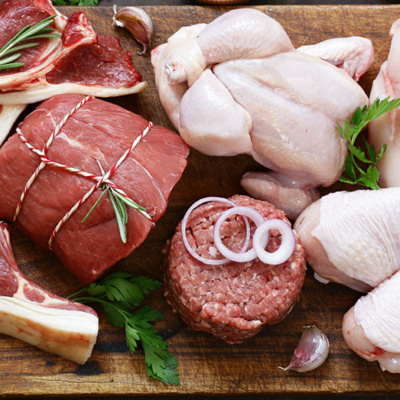top of mind news
- What Restaurants Need to Know About African Swine Fever
- How to Deliver a Safe Gluten-Free Dining Experience
- Are Your Best Employees Frustrated by a Lack of Training?
- What Are College Kids Eating?
- How Diners Are Ordering Now
THE FARM
Poultry
Weekly young chicken harvests continue to increase, with birds processed for the week ending August 24th up 4.5% from last year. Weekly ready-to-cook production continues to run above a year ago, coming in just shy of 4% percent (yoy) as bird weights remain heavy. While expectations remain for a modest slowdown in chicken slaughter heading into the early fall, the aforementioned heavier birds are expected to keep chicken supplies sufficient. Chicken breast meat and tender prices are forecast to be under pressure this fall, while wing prices should find some seasonal support into October. But, this year’s fall time seasonal rise for wing prices is anticipated to be less intense.
Beef
Beef output last week remained strong amid the loss of the Holcomb plant, but eased from both the week prior and last year. Carcass weights continue to rise, but USDA grading remains lackluster, further indicating that cattle supplies remain current. Anticipate beef prices to seasonally reset heading into the fall, especially given the fact that out-front beef demand could wane due to elevated prices for future supplies. The beef trim and grind markets continue to hold gains and may be slower to seasonally decline in the coming weeks, but ground beef interest is likely past its peak and lower prices are likely as the pipeline refills.
Pork
After relatively light Saturday hog kill ahead of the holiday week, pork production last week fell 2.7% from the prior week, but was still .3% over a year ago. While pork prices continued to ease into late August, prices have begun to firm lately with bellies and hams leading the charge upward. Mostly steady to higher pork primal prices are anticipated heading into the fall. However, further seasonal weakness on the pork trim markets is expected after 42% pork trim prices likely caught some spillover strength from the rising 50% beef trim prices this summer.
THE SEA
Seafood
The shrimp markets are mostly above year ago levels but are still historically engaging. The U.S. dollar continues to trade at historically inflated levels against some key seafood trade currencies including the Euro. This is likely to encourage U.S. shrimp imports during the next several months. Thus, the upside price risk in the shrimp markets may only be modest from here unless there is a major disruption in production in Asia.
THE GARDEN
Produce
Idaho potato supplies remain seasonally limited. However, the Idaho potato harvest has gotten underway with progress expected to intensify notably in the coming weeks. This typically is accompanied with sharply lower potato prices. The five-year average trend for the 70 count Idaho potato market during the next two weeks is a decline of 27%. The tomato markets remain relatively firm. Hurricane Dorian is not anticipated to greatly impact the tomato crops on the East Coast. But firm tomato prices may persist in the near term.
THE KITCHEN SINK
Dairy
Cheese block prices this week established a new 58-month high. Solid U.S. cheese demand is firming prices and so is lackluster Q3 milk output vs 2018. That said, global cheese prices remain weak which is hampering domestic exports. Cheese prices should seasonally peak soon, but block prices may approach $2.000/lb. in the near term. Spot butter prices since last week were the lowest since December. International butter prices have fallen notably and are limiting U.S. butter exports. Butter prices are usually choppy in September but trend lower in the fourth quarter.
Grains
Food oil prices remain at historically engaging levels in part due to ample soybean supplies in the U.S. Yet, China is short food oil stocks due to their smaller soybean imports which is expected to boost world food oil trade in the coming months. This could support soybean oil prices at times. However, runaway soybean oil prices are not expected.
Oil
Nearby ultra-low diesel fuel futures since last week are modestly higher. The EIA’s most recent national average retail diesel price was $2.976, which was 9.3% cheaper than 2018. Diesel fuel prices look poised to rise further in the near term.













